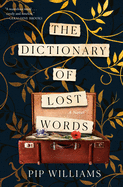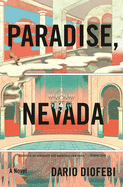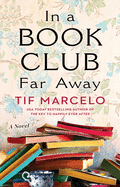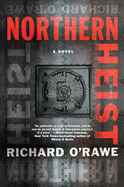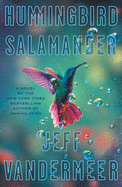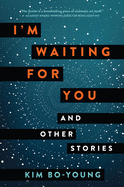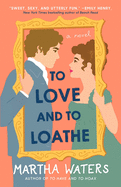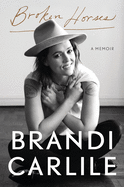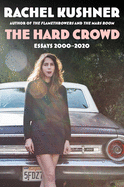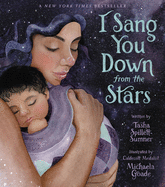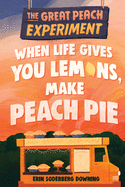 |
| (photo: Moranne Keeler) |
Jon Klassen is a Canadian-born author/illustrator. His books include I Want My Hat Back, Caldecott winner This Is Not My Hat and We Found a Hat. He is a member of the Order of Canada in recognition of his contributions to children's literature. He lives and works in Los Angeles with his wife and two sons. His new book is The Rock from the Sky (available now from Candlewick).
Your work is known for its dark, humorous edge.
I think storytelling, especially for kids, is about balance. I like my books to be fairly quiet and almost boring-looking, but to get permission to do that I need a story that has a lot of emotion behind it. The same applies to darkness and humor: if you strike the right humorous tone, you're allowed to get darker with it. Darkness and humor are closely related. It's actually hard to be funny without being at least a little dark, because humor is a release valve for things that bother you. It reframes something that actually is just plain dark without solving it or making it better, but at least it helps you look at it.
What inspired you to structure The Rock from the Sky as five stories?
I had tried chapters in my last book, and I really liked how it changed the writing. A big inspiration was James Marshall's George and Martha stories. I always felt like some of the biggest laughs in those books were when you turned the page and saw the title for the next story and realized that was how he'd ended the last one. I also had the first story done but felt it was too short on its own to justify a book and I had a few characters I knew and enjoyed, so I wanted to see where it went.
What does your background as an animator contribute to your work in picture books?
You learn that you can't just have a character do something; you need to prepare the audience for it. Every action has a few frames of prologue and epilogue, and consequences of those actions have to be exaggerated to look real. A ball hitting the ground has a frame where it's almost flat when it lands, but anything less than that doesn't look right when you play it. I think my stories are kind of like that: the consequences for everything are way outsized, but that's the only way they feel right.
As you did in previous stories, The Rock from the Sky has no narrator, only dialogue.
Having no narrator does a lot of the stylistic work for me. Removing it adds this weird silence between the lines that I love, and I write to those silent pauses as much as anything. Initially that came from my not knowing what to do with a narrator. I had the pictures and I had the voices--a narrator seemed like one too many ways to get information to the audience. It also reminds me of how a play sounds. Characters in plays don't often talk naturally; they declare things out loud and have asides to the audience and often don't say what they mean to one another. All these great dramatic tricks suit picture books because they are about clarity and trusting your audience at the same time.
The stories play out against a sort of dreamy, perpetual twilight.
Now that we're talking about plays, the basic idea for this book was kind of a cheap show that maybe got put on after the main event by some bit players who found some hats in the costume box. I wanted them to feel small on a big stage, like they maybe weren't supposed to be there. The lighting is meant to sort of be like how a stage is lit upward. The clouds are hit from the bottom and move along like they're on strings, and when the sun does show up it doesn't cast any light directly. Twilight kind of works for the after-show idea, too. The main thing is over. People are sneaking out and going home to bed.
While hats don't act as plot drivers in this book, they are strongly featured.
In this book they act as a symbol for how I thought about these guys, as kind of broad, campy comedy actors. The little bowler hats cover a surprising amount of ground, referentially. They bring up Laurel and Hardy, Samuel Beckett, Magritte. I don't expect kids to get that, but it helped me write them, weirdly. The snake is wearing a beret for reasons I haven't quite explained to myself. I didn't want him to have a bowler; he's not really one of the gang but he had to have something. His job is to indirectly tempt one of the characters away from his friend, so maybe I thought it should look romantic?
Be brutally honest: What's the ratio of stolen to legitimately owned hats in this book?
As I say, I think the hats are all borrowed from backstage and will probably be forcibly taken back once the stage manager hears about this dumb show going on without his permission.
I get the sense that the animals in the story have known each other a while.
I think that's right, that the idea was to suggest a long time spent with each other. The depth of their relationship kind of came out of necessity--I couldn't figure out how to get that turtle to move out of the way of the rock until I thought of him being jealous of his friend's new friend, and then it was like, "Well well well, look who's secretly invested." I don't think their relationship problems are resolved by the end of the book, but I think the turtle might not try to leave in a huff--or move at all--for a while.
How did you develop the cyclopean monster in the third story?
He had to be simple and scary, but not angry-scary. Almost robotic, but he couldn't be a robot because he's also emotional and flies off the handle for reasons we're not privy to. I think he's supposed to be an alien, or at least the result of something inexplicable that happens in the future, an experiment gone wrong, I don't know. I was thinking about the drawings you see of The War of the Worlds, but a cheap stage-show version.
How does your creative process change when you have a collaborator?
I love collaborating. So much of working by yourself involves trying to get out of your own way and collaboration does that automatically. It's very freeing. I find I'm up for stuff collaboratively that I would overthink on my own.
What should readers expect from you in the future?
I'm looking to adapt some older folk tales maybe! Maybe scary stuff. Again, trying to get it out of my control completely, but if it's older or more obscure in its origins, I also get to do what I want to it, so it's another nice mix. We shall see. --Jaclyn Fulwood
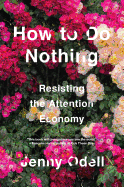 "This is real," writes Jenny Odell in How to Do Nothing: Resisting the Attention Economy (Melville House). "Your eyes reading this text, your hands, your breath, the time of day, the place where you are reading this--these things are real. I'm real too. I am not an avatar, a set of preferences, or some smooth cognitive force; I'm lumpy and porous, I'm an animal."
"This is real," writes Jenny Odell in How to Do Nothing: Resisting the Attention Economy (Melville House). "Your eyes reading this text, your hands, your breath, the time of day, the place where you are reading this--these things are real. I'm real too. I am not an avatar, a set of preferences, or some smooth cognitive force; I'm lumpy and porous, I'm an animal."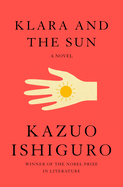 I read Odell's book shortly before encountering Klara, the AF (Artificial Friend) in Kazuo Ishiguro's novel Klara and the Sun (Knopf). Set in a not-so distant future, the novel depicts a world where genetic editing is normalized, workers are "substituted," children are "lifted" (or not) and "interaction meetings" teach kids how to... interact. "Everyone's had to find new ways to live their lives," says one parent. Though not human, Klara must adapt too, and a key question ("Do you believe in the human heart?") shows just how close she gets to the answer, which is oddly scary and heartening.
I read Odell's book shortly before encountering Klara, the AF (Artificial Friend) in Kazuo Ishiguro's novel Klara and the Sun (Knopf). Set in a not-so distant future, the novel depicts a world where genetic editing is normalized, workers are "substituted," children are "lifted" (or not) and "interaction meetings" teach kids how to... interact. "Everyone's had to find new ways to live their lives," says one parent. Though not human, Klara must adapt too, and a key question ("Do you believe in the human heart?") shows just how close she gets to the answer, which is oddly scary and heartening. 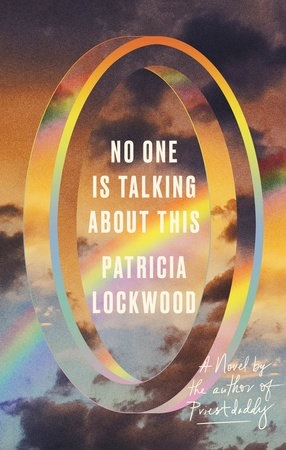 "She opened the portal." Patricia Lockwood's narrative voice is cautionary (and sharp, and funny, and heartwrenching... all the words) in her novel No One Is Talking About This (Riverhead). As readers, we are lured by the protagonist down a rabbit hole as she navigates virtual landscapes where she has achieved global fame for a single post: "Can a dog be twins?" Then lives--and a death--outside the portal pose hard, unanswerable questions of their own (" 'Can ghosts learn new technology?' her sister asked, thinking of what must come next....").
"She opened the portal." Patricia Lockwood's narrative voice is cautionary (and sharp, and funny, and heartwrenching... all the words) in her novel No One Is Talking About This (Riverhead). As readers, we are lured by the protagonist down a rabbit hole as she navigates virtual landscapes where she has achieved global fame for a single post: "Can a dog be twins?" Then lives--and a death--outside the portal pose hard, unanswerable questions of their own (" 'Can ghosts learn new technology?' her sister asked, thinking of what must come next....").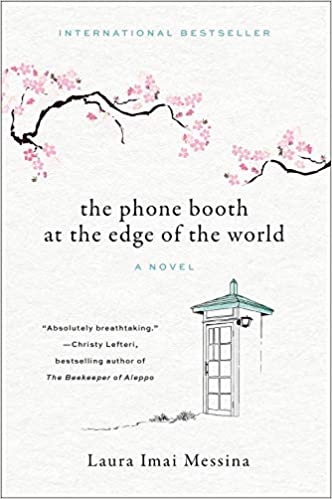 My final stop on this recent reading journey seems logical in retrospect. I found sanctuary in Laura Imai Messina's The Phone Booth at the Edge of the World (Overlook Press), a beautiful novel inspired by an actual disconnected "Wind Phone" in Japan, on which people can talk to lost loved ones. The "function of the telephone, rather than to channel and guide voices into a single ear, was to broadcast them out onto this wind."
My final stop on this recent reading journey seems logical in retrospect. I found sanctuary in Laura Imai Messina's The Phone Booth at the Edge of the World (Overlook Press), a beautiful novel inspired by an actual disconnected "Wind Phone" in Japan, on which people can talk to lost loved ones. The "function of the telephone, rather than to channel and guide voices into a single ear, was to broadcast them out onto this wind."


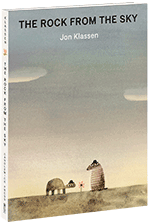


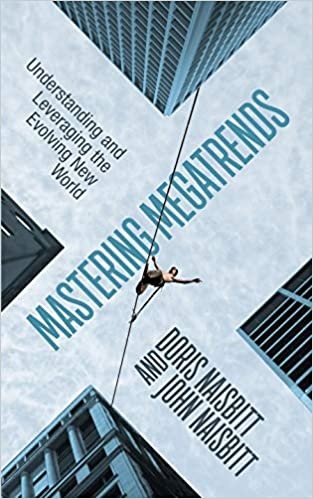 John Naisbitt, the business guru and author of the megabestseller Megatrends and other futuristic titles, died on April 8 at age 92, the
John Naisbitt, the business guru and author of the megabestseller Megatrends and other futuristic titles, died on April 8 at age 92, the 